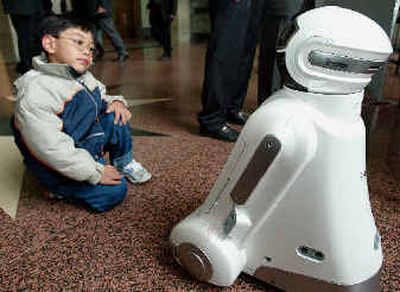The robots among us

GENEVA — The use of robots around the home to mow lawns, vacuum floors, pull guard duty and perform other chores is set to surge sevenfold by 2007, says a new survey that credits dropping prices.
The domestic helper boom coincides with record orders for industrial robots, the U.N.’s annual World Robotics Survey adds.
The report, issued Wednesday by the U.N. Economic Commission for Europe and the International Federation of Robotics, says 607,000 automated domestic helpers were in use at the end of 2003, two-thirds of them purchased last year.
Most of them — 570,000 — were robot vacuum cleaners. Sales of lawn-mowing robots reached 37,000.
By the end of 2007, some 4.1 million domestic robots will likely be in use, the study says. Vacuum cleaners will still make up the majority, but sales of window-washing and pool-cleaning robots are also set to take off, it predicts.
Sales of robotic companions, like Sony’s canine-like Aibo, also have climbed, with some 692,000 “entertainment robots” around the world.
Until very recently, robots have failed to live up to expectations, acknowledged Colin Angle, chief executive of iRobot Corp. of Burlington, Massachusetts, whose Roomba is a popular robovac and which also makes robots used by the U.S. military.
“Our biggest hurdle right now is skepticism,” Angle said. But “we are just at a point where robots are becoming affordable … and some of them can actually do real work.”
The UNECE said household robots could soon edge their industrial counterparts, which have dominated since the U.N. body first began counting in 1990.
“Falling or stable robot prices, increasing labor costs and continuously improving technology are major driving forces which speak for continued massive robot investment in industry,” said Jan Karlsson, author of the 414-page study.
In the first half of 2004, business orders for robots were up 18 percent on the same period a year earlier, mostly in Asia and North America.